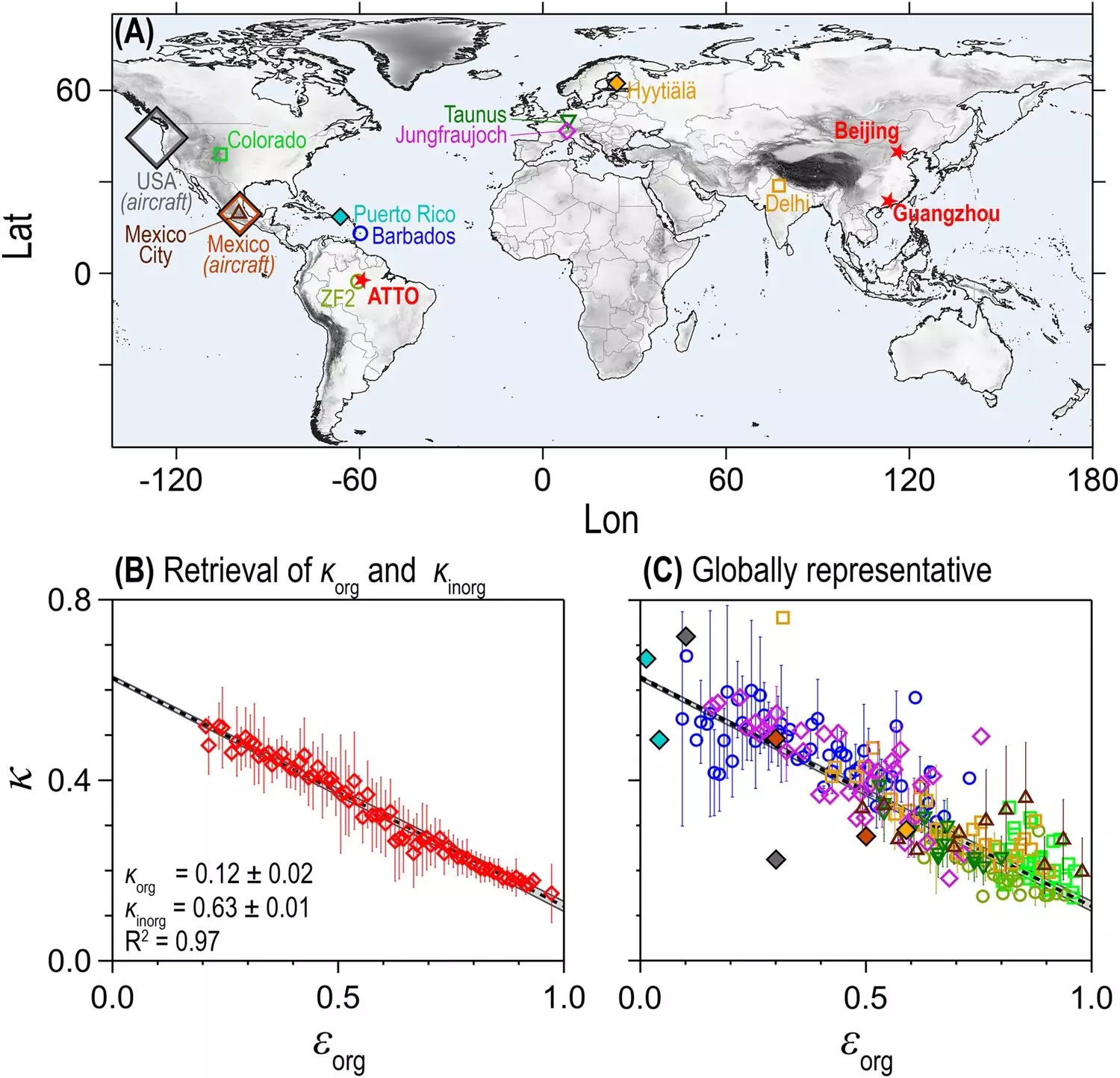Climate change has been a topic of concern and study for decades. One crucial factor that affects the climate is the presence of aerosol particles in the atmosphere. Aerosol particles have the ability to hold water, which is known as hygroscopicity (K). However, understanding the relationship between the chemical composition of aerosol particles and their hygroscopicity has been a complex endeavor. Fortunately, a recent study conducted by an international research team led by the Max Planck Institute for Chemistry (MPIC) and the Leibniz Institute for Tropospheric Research (TROPOS) has shed light on this relationship and provided a simplified formula to calculate hygroscopicity. In this article, we will explore the findings of this groundbreaking study and their implications for climate modeling and forecasting.
The relationship between the hygroscopicity of aerosol particles and their chemical composition has long been recognized as a crucial factor in climate modeling. The study conducted by the research team involved extensive investigations using data from 16 measurement campaigns spanning from 2004 to 2020. These campaigns covered diverse regions and climate zones, ranging from the tropical rainforest in the Amazon to metropolitan areas with significant air pollution in Asia, and even the boreal pine forest of the Arctic Circle in Europe. The researchers utilized cloud condensation nuclei measurements and aerosol mass spectrometry to determine hygroscopicity and chemical composition, respectively.
Based on their analysis, the research team discovered that the relationship between the chemical composition and hygroscopicity of aerosol particles could be simplified into a linear formula. The formula, κ = ϵorg ⋅ κorg + ϵinorg ⋅ κinorg, revealed that hygroscopicity is primarily determined by the share of organic and inorganic materials present in the aerosol. Even with the chemical complexity of organic matter, the simple formula successfully captured its hygroscopicity. The study reported average hygroscopicity values of κorg= 0.12 ± 0.02 for organic particle shares and κinorg = 0.63 ± 0.01 for inorganic ions when averaged globally.
The implications of this study for climate modeling and forecasting are significant. By reducing the relationship between the chemical composition and hygroscopicity of aerosol particles to a simple linear formula, researchers can make simplified assumptions in climate models without compromising accuracy. This means that investigations and predictions regarding climate change can be more reliable and help us better understand the potential impacts of aerosol particles on the climate.
To validate the effectiveness of the new formula, the researchers utilized the global aerosol climate model ECHAM-HAM. The experiments conducted demonstrated that simplified assumptions did not introduce significant uncertainties in the model results. This further supports the claim that the simplified formula can be confidently used in climate modeling, providing a more accurate representation of the complex interactions between aerosol particles, solar radiation, and cloud formation.
Unanswered Questions and Future Research
While this study has made significant progress in unraveling the relationship between aerosol particles and climate change, there are still many unanswered questions regarding the hygroscopicity of aerosol particles. The interactions between atmospheric aerosols, solar radiation, and clouds remain poorly understood and represent one of the greatest uncertainties in climate modeling. Further research is necessary to continue improving our understanding of these intricate dynamics and to refine the models used for climate change forecasting.
The study conducted by the Max Planck Institute for Chemistry and the Leibniz Institute for Tropospheric Research has provided valuable insights into the relationship between aerosol particles and climate change. By simplifying the complex relationship between the chemical composition and hygroscopicity of aerosol particles into a linear formula, researchers can improve the accuracy of climate models without introducing substantial uncertainties. This advancement in understanding paves the way for more reliable investigations and predictions regarding climate change, ultimately helping us make informed decisions to mitigate its impacts. However, the research also highlights the need for further exploration and research to address the remaining uncertainties in this field. By continuously expanding our knowledge, we can strive towards a more comprehensive understanding of the intricate mechanisms driving climate change.


Leave a Reply